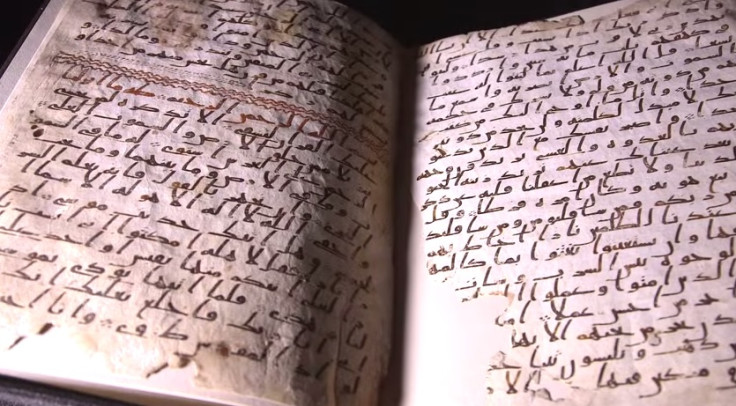World's oldest Quran: Prophet Muhammad-era manuscript found at Birmingham University

What is believed to be the world's oldest fragment of the Quran has been found at the University of Birmingham.
The manuscript of the Muslim holy text were found in the university's library and are believed to date as far back as 1,370 years.
Radiocarbon analysis dates parchment on which the text is written to the period between 568CE and 645CE - around the time the Islamic Prophet Muhammad is believed to have lived - with 95.4% accuracy.
The tests carried out by the University of Oxford places the two parchment leaves as possibly the oldest surviving text of the Quran.
The manuscripts consist of parts of Suras [chapters] 18 to 20 of the holy book, written in an early form of Arabic script known as Hijaz. The pages were mistakenly kept with the leaves of a similar Quran, which only dates back as far as the seventh century.
The pieces of the Koran are part of the University's Mingana Collection of Middle Eastern manuscripts, held in the Cadbury Research Library.
The parts of the Qur’an that are written on this parchment can, with a degree of confidence, be dated to less than two decades after Mohammad’s death.
Susan Worrall, Director of Special Collections (Cadbury Research Library), at the University of Birmingham, said: "The radiocarbon dating has delivered an exciting result, which contributes significantly to our understanding of the earliest written copies of the Quran.
"We are thrilled that such an important historical document is here in Birmingham, the most culturally diverse city in the UK."
Dr Muhammad Isa Waley, Lead Curator for Persian and Turkish Manuscripts at the British Library, described the discovery of the Quran fragments as "news to rejoice Muslim hearts".
The Prophet Muhammad is generally thought to have lived between 570CE and 632CE, meaning the manuscript found at the university could date back to the founding years of the Islam religion.
Professor David Thomas, Professor of Christianity and Islam, and Nadir Dinshaw, Professor of Interreligious Relations at the University of Birmingham, said: "The radiocarbon dating of the Birmingham Quran folios has yielded a startling result and reveals one of the most surprising secrets of the University's collections. They could well take us back to within a few years of the actual founding of Islam.
"The tests carried out on the parchment of the Birmingham folios yield the strong probability that the animal from which it was taken was alive during the lifetime of the Prophet Muhammad or shortly afterwards. This means that the parts of the Quran that are written on this parchment can, with a degree of confidence, be dated to less than two decades after Mohammad's death.
"These portions must have been in a form that is very close to the form of the Quran read today, supporting the view that the text has undergone little or no alteration and that it can be dated to a point very close to the time it was believed to be revealed."
Waley added: "The Muslim community was not wealthy enough to stockpile animal skins for decades, and to produce a complete Mushaf, or copy, of the Holy Quran required a great many of them.
"The carbon dating evidence, then, indicates that Birmingham's Cadbury Research Library is home to some precious survivors that – in view of the Suras included – would once have been at the centre of a Mushaf from that period. And it seems to leave open the possibility that the Uthmanic redaction took place earlier than had been thought – or even, conceivably, that these folios predate that process. In any case, this – along with the sheer beauty of the content and the surprisingly clear Hijazi script – is news to rejoice Muslim hearts."
The manuscript will be on public display at the Barber Institute of Fine Arts, University of Birmingham, from 2 October until 25 October.
© Copyright IBTimes 2025. All rights reserved.




















